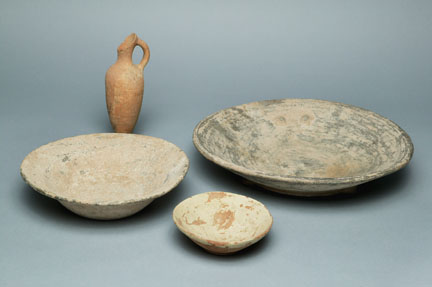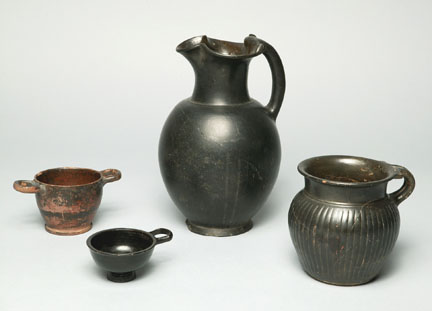

|
Mediterranean
Terra Cotta & Bronze-ware
|
|||
| The oldest materials in the Rietz Collection of Food Technology are common unglazed terra cotta vessels from ancient Palestine and decorated serving-ware from Cyprus. Dating from roughly the 10th to the 6th centuries BCE, the bowls, pots and jars represent the forms of vessels used for storage, preparation, and serving of food and drink that would have been common during the Iron Age. | |||
| These items were the most basic tools of ancient cooking, used at every meal, and often were items of trade. Produced by Phoenician colonies on the coast and islands of the eastern Mediterranean, these objects were exported to the Levant and Egypt. Such common and ubiquitous trade goods underscored the shared cooking and eating technologies of differing cultures throughout the region. Their basic structure and function remained unchanged for millennia. |

Palestinian Terra Cotta Vessels Clockwise from upper left: CAS 0389-0443, 0389-0496, 0389-0145, 0389-0495 CAS Photo/Dong Lin |
||
| The Collection also contains bronze cooking vessels from Roman Palestine and date from the 1st century BCE to the 2nd century CE. Although badly corroded, they illustrate the shapes of cast metal cooking vessels of the period. These vessels represent the cooking technologies of more affluent households, as metal cooking vessels would not have been available to most people. | |||

Mediterranean drinking vessels Left to right: CAS 0389-0082, 0389-0263, 0389-0188, 0389-0097 CAS Photo/Dong Lin |
|
||